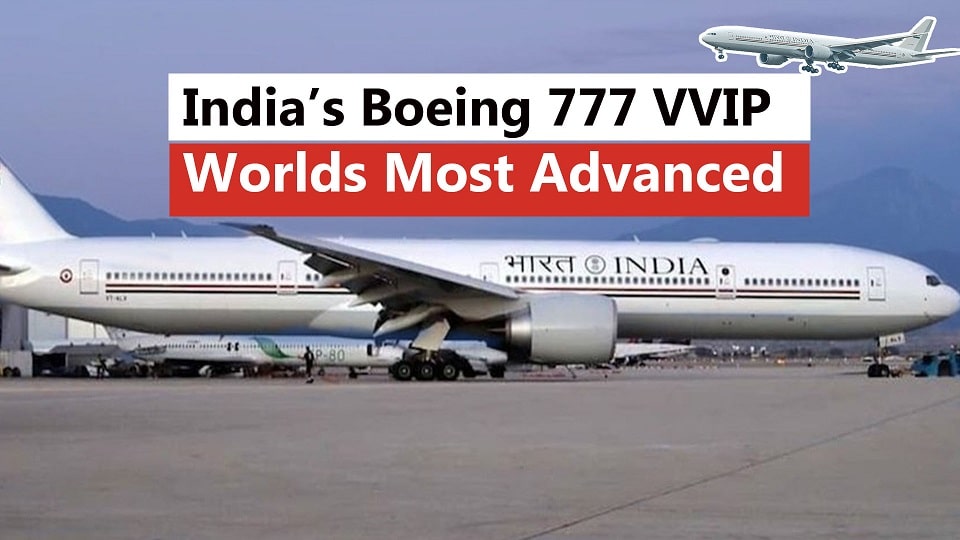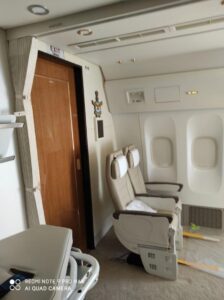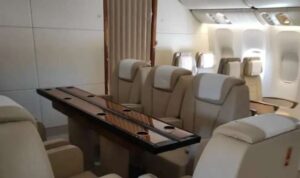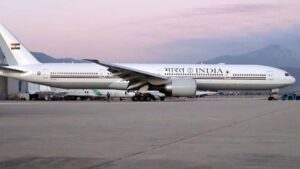Aerospace
Is India’s VVIP Aircraft the world’s most advanced after the B747 of the US Air Force one?

As we all know, the United States president’s aircraft, the Air Force One, is one of the most famous planes in the world; similarly, many aircraft are used by country’s VVIPs, such as presidents and prime ministers. However, these aircraft are not typical because they have been flown under privilege flying with special support from the country’s defense agency.
The air traffic control call sign for any special extra section flight flown by the Indian air force for the president of India, vice president, or prime minister is Air Indian One. The unit in charge of directing the mission is a special aircraft based at Air Force Station Palam..
The Air India One was once an Air India Boeing 747-400 that transported the President, Vice President, and Prime Minister. This was a passenger flight type that was later turned into a special flight for international visits. Because of the high cost of maintenance and the high fuel consumption of these aircraft, the government decided to change its fleet. Also, because Air India will no longer be a private entity after 2021, the government decided to change its fleet and own its own private plane, which will be controlled by the Indian Air Force. Air India Engineering Services Limited (AIESL), which has experience servicing Boeing 777 series aircraft for Air India’s commercial fleet, will maintain them under an unique contract.
How has Boeing’s B787 dreamliner turned into a nightmare?
The Indian government began selecting new aircraft in 2016, and the Boeing 777-300ER was chosen as the SESF (VVIP transport). The new aircraft, which feature specifically designed liveries, will begin service in October 2020, replacing Air India’s Boeing 747-400s. The newly admitted aircraft, unlike the 747s, are military vessels that are technically owned and operated by the Indian Air Force.
The 777-300ER’s onboard electronics include around 238 miles of wire, making it no ordinary airliner (twice the amount found in a normal 777). Heavy shielding is required to protect wires and critical devices from the electromagnetic pulse caused by a nuclear explosion.
Emirates Boeing 777 and A380, joined by UAE carriers usher in the opening of Dubai Airshow
Two ex-Air India planes (VT-ALV and VT-ALW, now K7066 and K7067, respectively) were modified with missile defense and countermeasures equipment, including LAIRCM self-protection suites (SPS). Previous Air India 747s were equipped with missile defense and countermeasures equipment, including self-protection suites for large aircraft infrared countermeasures (LAIRCM) (SPS).
Air Force One, a new Boeing 777 aircraft. The planes are equipped with encrypted satellite communication systems, advanced navigation aids, an advanced missile warning system, a missile deflecting shield, and electronic countermeasures to protect them from ground-based or aerial threats, as well as flares and glares to fool the missile. They can travel vast distances without the requirement for air-to-air refueling (which is a feature on some of them).the VC-25 As though they had never been used before in their service)
ATR paves way for next generation of its best-selling aircraft
The executive enclosure on the Indian Air Force aircraft features an office and a bedroom. All other passengers on Air India One must carry color-coded identity cards with them at all times. Inside, the plane will contain a meeting area, a VVIP cabin, a medical facility, and seats for additional dignitaries and personnel. This aircraft can fly continuously for 17 hours after being refuelled.
Because Boeing has experience with business jets, it has previously modified most commercial aircraft into VVIP private planes for a variety of countries, not just the Air Force. Boeing has its own security upgrade system for defense. These planes are capable Any countermeasure defensive system can be installed according to the clients’ needs. The Boeing 777 aircraft is one of the greatest in the world, with a big capacity in terms of range and the ability to transport a significant number of people.
Vistara and Air India are in talks to be merged by Tata Sons and Singapore Airlines.
In the event of an emergency, the plane will be able to refuel in the air. The ‘Air India One’ can reach a top speed of 559.33 mph thanks to its twin GE90-115 engines. Both planes are like strong forts flying through the sky. ‘Air India One’ is estimated to cost Rs 8,458 crore. These new aircraft, like Air Force planes, will have a limitless range of flight and be capable of flying around the world at the same time.
In the event of an attack, the tailored aircraft can also conduct a counter-offensive, similar to Air Force One’s military systems. The Boeing 777 has a system in place to identify missiles and jam questionable radar frequencies. Whether it’s electronic jammers for anti-missile defense or communication jammers, Air India One will be close behind, with military security systems and facilities for medical emergencies and comfort.

Aerospace
Boeing Transfers Rocket Stage to NASA, Paving Way for Human Moon Mission

Boeing has achieved a significant milestone by providing NASA with the second core stage of the Space Launch System (SLS) rocket.
This crucial component, crafted at NASA’s Michoud Assembly Facility (MAF), is set to propel the Artemis II crew into lunar orbit, marking humanity’s return to deep space after a 50-year hiatus.
The monumental Boeing-built rocket stage, the largest element of the Artemis II mission, will embark on a journey aboard the Pegasus barge, traveling 900 miles to NASA’s Kennedy Space Center.
Comparison of two legendary aircraft B777x vs B747 aircraft:Click here
Upon arrival, it will be meticulously integrated with other essential Artemis II components, including the upper stage, solid rocket boosters, and NASA’s Orion spacecraft within the iconic Vehicle Assembly Building. This intricate integration process is a vital step toward the eagerly anticipated Artemis II launch, slated for 2025.
“Boeing-built products helped land humankind on the moon in 1969, and we’re proud to continue that legacy through the Artemis generation,” remarked Dave Dutcher, vice president and program manager for Boeing’s SLS program. “Together, with NASA and our industry partners and suppliers, we are building the world’s most capable rocket and paving the way to deep space through America’s rocket factory in New Orleans.”
NASA, Lockheed Martin Reveal X-59 Quiet Supersonic Aircraft:Click here
The delivery of Core Stage 2 marks a significant achievement in the evolution of the SLS rocket. Towering over 200 feet and powered by four RS-25 engines, this core stage, coupled with two solid-fueled booster rockets, will generate a staggering 8.8 million pounds of thrust. This immense power is crucial to launching Artemis II and future missions into the vast expanse of space.
The SLS rocket stands unparalleled in its capability to transport both crew and substantial cargo to the moon and beyond in a single launch. Its extraordinary capacity will facilitate the delivery of human-rated spacecraft, habitats, and scientific missions to destinations including the moon and Mars, ushering in a new era of space exploration.
-

 Travel1 week ago
Travel1 week agoAir India to Expand US Operations with Three New Routes After a Decade
-

 Travel2 weeks ago
Travel2 weeks agoWhy We Should Avoid These Stamps in a Passport
-

 Airlines1 month ago
Airlines1 month agoInvestigations Reveal Fake Chinese Titanium in Boeing and Airbus Jets
-

 Tech4 weeks ago
Tech4 weeks agoChina’s CATL Plans 1,800-Mile Electric Plane Launch by 2027
-

 Airport3 days ago
Airport3 days agoTop 10 Largest Airports in the World by Size
-

 Aerospace4 weeks ago
Aerospace4 weeks agoChina’s Fighter Jets Turn Wings into Autonomous Drones
-

 Airlines4 days ago
Airlines4 days agoAir India Rolls Out A350s for Delhi-New York JFK and Newark Routes
-

 Defence3 weeks ago
Defence3 weeks agoBoeing Enhances Chinook with New Engines and Block II Upgrades at $96 Million











